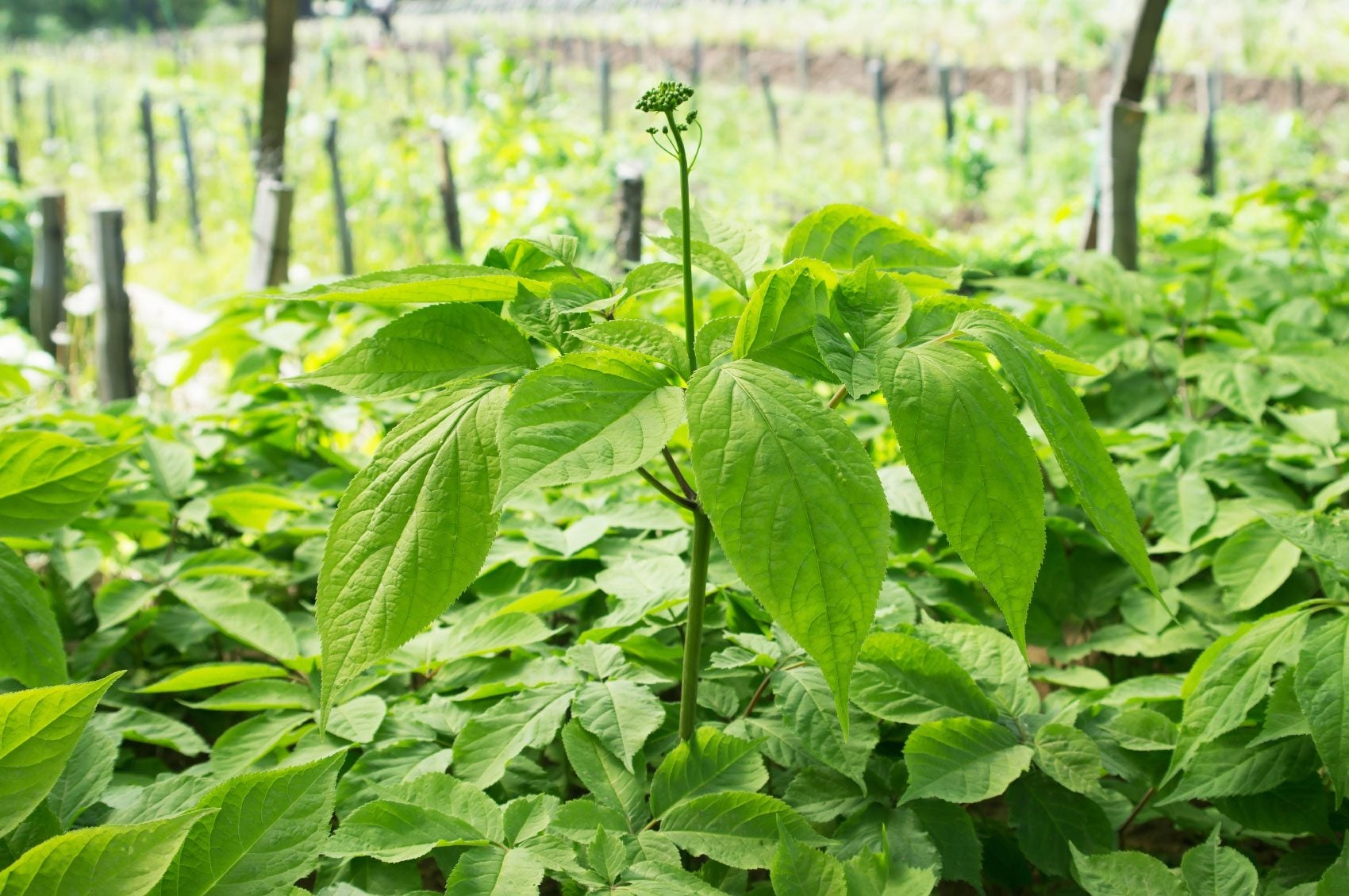Ginseng Growing Info: Learn About Ginseng Harvesting And Care


American ginseng (Panax quinquefolius), native to much of the eastern United States, is valued for its many useful properties. Unfortunately, wild ginseng has been over harvested in its natural environment and is on the threatened plant list in several states. If you have an ideal growing environment and plenty of patience, you may be able to grow your own ginseng. Plants require at least three to five years before reaching maturity.
What is Ginseng?
Ginseng is an attractive perennial herb that attains a height of only 1 to 2 inches (2.5-5 cm.) the first year. The leaf drops in autumn and a new leaf and stem appear in spring. This growth pattern continues until the plant reaches a mature height of 12 to 24 inches (31-61 cm.). Mature plants have at least three leaves, each with five oval, serrated leaflets. Clusters of greenish yellow blooms appear in midsummer, followed by bright red, winkled berries.
Ginseng Plant Uses
The fleshy roots are used in herbal medicines and natural remedies. Various studies indicate that ginseng may boost the immune system, lower blood sugar and cholesterol, and provide temporary memory improvements. While the effects haven't been widely studied, some people believe ginseng may treat a number of conditions including fatigue, heart disease, menopausal symptoms, and high blood pressure. Ginseng is also used in soaps and lotions. In Asia, ginseng is incorporated into toothpaste, gum, candy, and soft drinks.
Ginseng Growing Information
How to grow ginseng is fairly easy but locating plants may be difficult. Ginseng is usually planted by seed, which must be stratified for two years. However, you may be able to find small rootlets in greenhouses or nurseries. You can plant rhizomes from wild plants if you can find them but check first; harvesting wild ginseng is illegal in some states. Ginseng requires nearly total shade and no direct afternoon sunlight. A location near mature, deciduous trees is ideal. The goal is to mimic the plant's natural woodland environment as much as possible. The plant thrives in deep, loose soil with a high organic content and a pH of about 5.5.
Ginseng Harvesting
Dig ginseng carefully to protect the roots. Wash off excess dirt and spread the roots in a single layer on a screen. Place the roots in a warm, well-ventilated room and turn them every day. Small roots may dry in a day, but large roots can take as long as six weeks. Dried ginseng is most often used for teas. NOTE: Do not use ginseng or other plants medicinally without first consulting with an herbal specialist or other professional.
Sign up for the Gardening Know How newsletter today and receive a free copy of our e-book "How to Grow Delicious Tomatoes".

A Credentialed Garden Writer, Mary H. Dyer was with Gardening Know How in the very beginning, publishing articles as early as 2007.